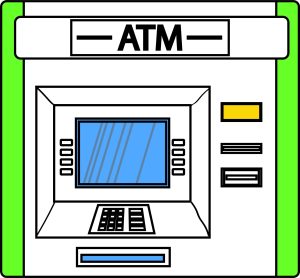
By understanding some of the scams that are out there, you are better able to protect yourself. Here is the CO-OP Solutions list of most prevalent financial scams:
1. Gift cards, secret shoppers, and the allure of fake offers
This scam works as follows: consumers are drawn in by a phony e-mail
or social media post to become a “secret shopper” in exchange for some
form of financial gain. When a consumer agrees to participate, the
fraudster seals the deal by delivering a very large counterfeit check.
The criminal then asks the consumer to deposit the check and purchase
gift cards with the funds – keeping a small portion of the proceeds as
compensation for being the “secret shopper.”
The victim here (a loose term, considering that most people will
realize this is a scam) is asked to e-mail photographs of the gift
cards, front and back, so the criminal can use them immediately – before
the counterfeit check has a chance to bounce.
Takeaway: The bounced check and all associated damages are the
responsibility of the consumer because the criminal and his or her
e-mail address are long gone by the time the check bounces.
“What this means is that the amount of the bounced check will be
deducted from the consumer’s account when the check is returned,”
explained Katie Clark of Northwest Credit Union Association (NWCUA). “If
they don’t have funds in the account to cover the returned check, then
the consumer’s account will be overdrawn.”
2. “You can never be too rich or too thin” – and other e-mail scams
Some consumers are attracted to “get rich” and “get thin” offers, and
unfortunately an age-old diet scam has surfaced again, targeting
consumers with spam e-mails. When an unwitting consumer signs up for the
“self-improvement” deal, that individual agrees to recurring billing
for the proposed service.
Takeaway: This ongoing billing arrangement is difficult to stop. And,
in some cases, the stolen payment card information is used for other
fraudulent purposes.
“Consumers should carefully read any agreement before providing
billing information as these transactions are not disputable since the
member authorized the company to deduct the recurring bills from their
checking account or debit card,” Clark said.
3. Account takeover schemes
This scheme is dangerous for both credit unions and service providers
and to their members. Social engineers, often armed with data from
recent breaches, call into financial institutions on a regular basis,
posing as customers or members looking to take over their accounts. And,
it can be difficult for credit union employees to tell the difference
because these criminals dial in with answers to the member’s
authentication questions (which they have sourced from the dark web).
4. Counterfeit money orders
Fake money orders are frequently used for online purchases from
websites like Craigslist. The problem is that high-quality counterfeit
money orders are hard to distinguish from the real thing.
Takeaway: Members holding a potentially counterfeit money order
should call the U.S. Postal Service verification line at 1-866-459-7822.
The U.S. Postal Service can verify the authenticity of money orders 48
hours after they are issued – and they can also offer tips on how to
recognize fake money orders in the future.
“If other checks are received as payment for a Craigslist sale, the
credit union can potentially help the member determine the legitimacy of
the check (often a cashier’s or official check) by contacting the
financial institution that issued the check,” Clark advised.
5. “MSN” help desk fraud
This form of fraud is usually directed at the elderly. A criminal
calls an unsuspecting consumer and warns that his or her PC – however
seldom used – is riddled with viruses. The fake technician offers to
assist, and then dispatches the victim to a local big box store to buy
prepaid gift cards which are given as payment for the tech support
services.
Takeaway: Losses to elderly victims of this scam can soar well into
the thousands – and the criminals are willing to take every nickel
without remorse. Some big box stores have started to try and identify
consumers who may be embroiled in these scams, but they can run into
roadblocks when victims are either mentally incapacitated – or reluctant
to admit they have fallen for a scam.
6. Card cracking
This rip-off scheme typically victimizes our youth. A fraudster
reaches out to a young person via social media and convinces the
potential victim that they can both benefit by helping each other out –
with the young account holder receiving a small sum – $100 or so – as
compensation for cooperating with the fraudster.
The victim then gives the criminal access to his or her online
banking credentials, so the criminal can deposit counterfeit checks into
the account. The fraudster also typically requires the usage of the
account holder’s debit card and, in some cases, accompanies the
co-conspirator to an ATM to perform withdrawals against the counterfeit
checks that have been deposited. This is especially troubling if the
account holder is a minor in the company of an adult criminal.
Bottom Line: All financial damages, including non-sufficient-funds
checks, fall back onto the young consumer. And that easy $100 profit? It
was fake as well.
7. Direct mail scams
Bogus – but official-looking – letters are delivered every day to
random consumers with stern requests for social security numbers and
other personally identifiable information. Some of these letters are
printed on what looks like big bank letterhead and, in all cases, there
is at least one “official looking” hard-copy form that the consumer is
asked to fill out and return.
Takeaway: The addresses on these letters and the return envelopes
provided are criminal addresses. They are not P.O. boxes belonging to
actual businesses. The main objective here is identity theft. This scam
can be very convincing to consumers because the U.S. Postal Service has
not been a criminal mainstay since the proliferation of email in the
mid-1990s.
Bottom Line: An informed consumer is an empowered one. Be sure to
recognize the signs of fraud will both reduce your risk and inspire
your trust.
Resource: CO-OP Solutions. “Be on the Lookout for These Seven Scams.”
Get more simple refreshers on how to recognize scams.
Fibre Card Manager Use this free service to protect and control your debit and credit cards within Online Banking and our mobile app! It allows you to define when, where, and how your cards can be used, and send alerts about activity. Learn More
Digital Wallet Losing your wallet is stressful. With mobile payments, you can shop securely and easily using your phone—no need to carry cards at participating merchants. Learn More
Locations & Hours Looking for a financial services center? See all our locations and hours. Learn More






